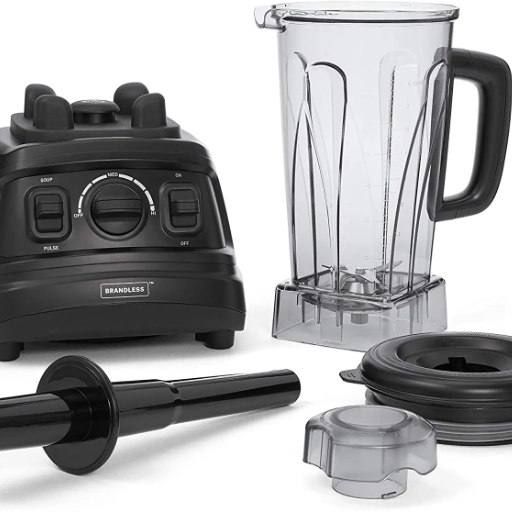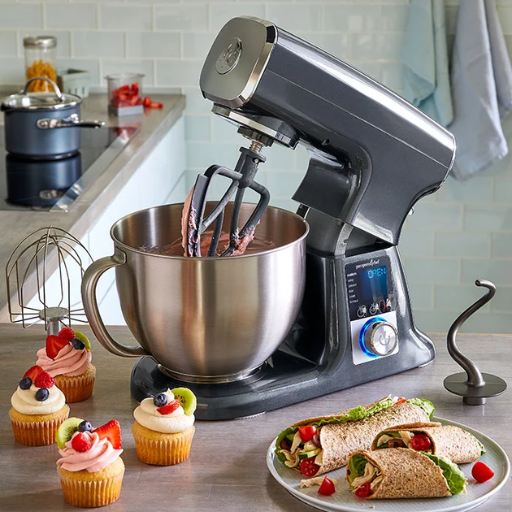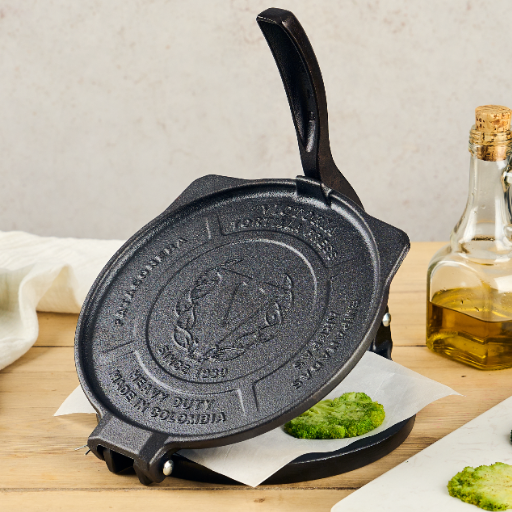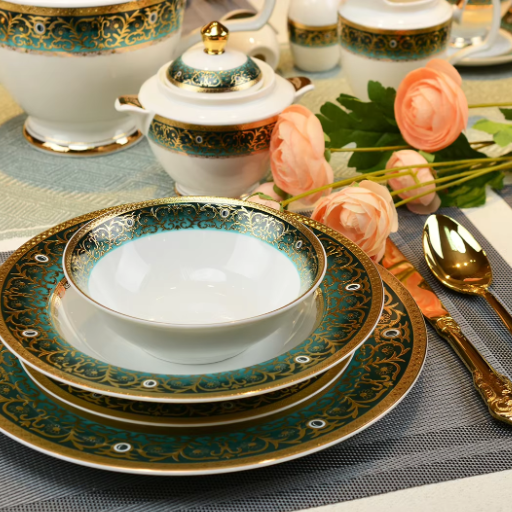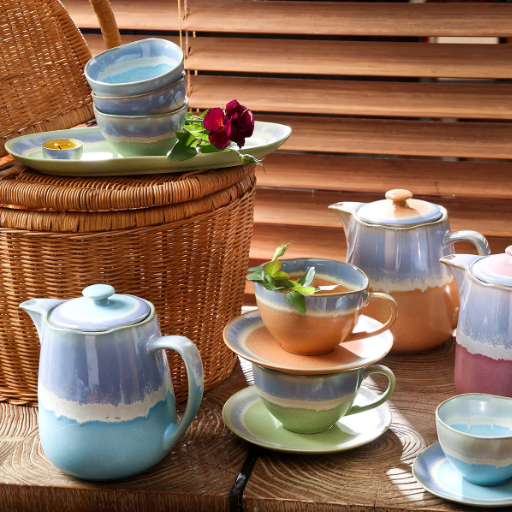The accessory that ensures your Ninja or Oster blender runs well and lasts long is its blade, and choosing the swap out part is critical. Arguably the most unnoticed part of a blender, blades are essential tools in every blending machine. They provide the appliance with the capacity to blend, puree, and mix ingredients into a smooth, consistent mixture. In this article, we’ll explain how blender blades affect the function of appliances and why investing in good-quality compatible accessories pays off in performance and longevity. If you wish to get the most out of your blender whether you are blending a smoothie, crushing ice, or puréeing soup, it is best to understand all your options in blades. We will guide you through all the articles, advantages, and tips of selecting the right blender blade for your needs.
What Are the Different Types of Blender Blades?
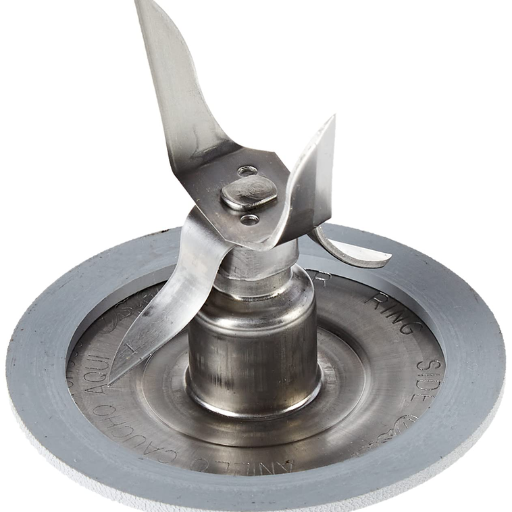
Blender blades can generally be categorized into four main types based on task-performance level:
- Cross Blades – These are Cross Blades, the most versatile and utilized blades that focus on chopping, blending, and pureeing. Cross blades do a good job at whipping up smoothies, sauces, and soups.
- Flat Blades – Capable of flat grinding and smooth mixing, Flat blades are suitable for softer ingredients like nuts, coffee beans, or dry grain processed into powder.
- Multi-Purpose Blades – Mid between cross and flat blades, multi-purpose offer some chopping and grinding and can be used for numerous tasks.
- Ice-Crushing Blades – These blades are made from tough, durable materials, and are designed to crush ice and break apart any frozen constituents in beverages or desserts.
All listed above designate specific tasks which is why is it critical to identify your required objectives in order to select the most efficient blade for your blender.
Understanding Blender Blade Designs
Each component of a blender guaranteeing the machine runs effectively, while also building to last, has gone through calculated design considerations. The blender’s blade, for instance, relies on certain characteristics to fulfill its purpose, such as its housing structure, the outer rim of the blade, and how it spins. Due to factors like rot and erosion through ages of exposure to water, heat, and cold, the blades are made of top-of-the-line stainless steel. Soft fruits, nuts, and other tougher ingredients are precisely cut due to meticulous sharpness and angling of the blades’ edges.
Motor power as well as the blades position have a direct link with their rotational speed enabling them to blend with final product in a desired granularity. Ingredients are pulled down due to high blades speeding creating a vortex effect, while designed blade spacing brings balance for unclogging. Moreover, these attributes assist in uncovering the reason behind the gaps in the performance of different blades, as well as new approaches in blending technology. Precision and reliability of modern blenders tailored for wide range of culinary works can be sustained through adherence to these design principles.
Cross Blade vs. Extractor Blade: What’s the Difference?
The Cross Type blade, also known as the Cross Blade, is a traditional tool found in older mixtures. They come equipped with multiple blades that make chopping, mixing, or pureeing components or ingredients simple. This specific blade is best suited for making smoothies, soups, and sauces that involve softer components that need to be blended. On the other hand, an Extractor Blade does have other more sophisticated features focused in its design specifically tailored for extracting nutrients from ingredients. Its combination of straight and curved blades, which work in smaller motors, grinder unit, pumps or spinning motion, assist in breaking down more challenging stems, seeds, leafy greens, and other fibrous fruits.
Different from the Cross Type Blade, Extractor Blades are engineered to preform advanced blending tasks that chop all items into finer parts. This makes them more effective for extracting phytonutrient-packed nutrients from the plants, which helps the body absorb more vitamins and essential minerals. While versatile in Cross Blade’s use, it sacrifices density and takes in more space forming a lighter mass within a mixture. Learning and understanding these key differences help maximize the efficiency of the selection process for consumers when it comes to choosing their preferred blade and adding further dietary goals.
How to Replace a Blender Blade?
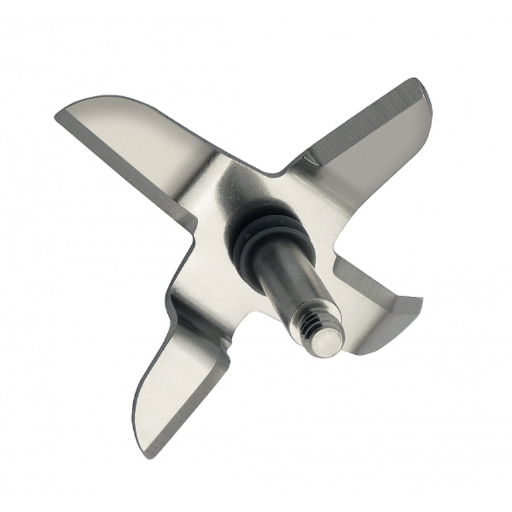
- Ensure Safety First
Before you start, take the extra precaution of ensuring the blender is in an off state so you do not face any accidental issues. Wearing cut-resistant gloves is a good idea, as protective wear is recommended with sharp blades.
- Disassemble the Blender
Lift the jar off from the blender base. Remove the existing blade assembly by unscrewing the base from the bottom of the jar. Depending on the blender model, you may need a specific tool such as a spanner wrench to loosen tightly secured components.
- Inspect and Clean Components
Once this is done, check the rubber gasket as well as blade housing for any signs of wear issues. Wash these parts with clear warm water and soap to free them from debris and grease. If the gasket is worn out, it is best to discard it as it would not provide a tight seal.
- Install the New Blade
Gaskets can be carefully placed on a loose rotatable merchandise. If trigger blades are used, then offsets, countermeasure them so they do not warm in operations. Gaskets and base crowned plates ought to be positioned so orientation back can free them explode.
- Secure the Blade Assembly
Attach blade assembly back on jar and screw it to the blade. Use needed tools as required to make certain all fastenings are durable. Be careful blades cannot be screws as this risks damaging crock or sandwich joint.
- Test for Proper Alignment
Connect the jar to the blender base and perform a brief low-power run to check if the new blade is functioning as it should. Pay attention to abnormal noises and check for leaks.
- Routine Maintenance Tips
Avoid blending frozen foods with minimal liquids as well as blending these with hard foods to maintain the health of the blades. Also, routinely check the seals. Cleaning the blades immediately after work will also promote the efficiency of the machine works.
With a reliable guide, owners can swap out a worn-out blender blade and achieve seamless performance for the appliance in years to come.
What Replacement Parts Are Compatible with My Blender?
Parts compatibility for your blender is determined by the model and manufacturer specifications, such as blades, seals, and motor couplings, which are typically model-specific. Glass and plastic jars, which are quite interchangeable, do come in a variety of sizes and thread patterns, making confirmation essential. Many manufacturers detail part numbers in user manuals or on the official website, as they assist in correctly identifying the replacement parts. Universal blades and seals may be fitted to some models, as long as performance specifications are verified beforehand. For the best results, parts should be purchased directly from the blender manufacturer or trusted suppliers to enhance durability and efficiency while minimizing service calls.
Where to Find Replacement Blender Blades
There are many reputable places to obtain replacement blender blades for proper function and compatibility. Websites of manufacturers remain some of the most reliable stores, often having a wide range of parts for specific models of blenders. Approved retailers and service branches also sell used blades, backed by customer care on how to use and fix the product. Furthermore, amazon and other local appliance stores sell such parts, although one must check the item descriptions as well as reviews for the effectiveness of the product being sold. When buying online, search for listings with specific mentions of the model and verified sellers to avoid low quality substitutes. With these tips, consumers can enjoy these trusted avenues to achieve blades that deliver the expected results without compromising performance standards set by the manufacturer.
Common Problems with Blender Blades
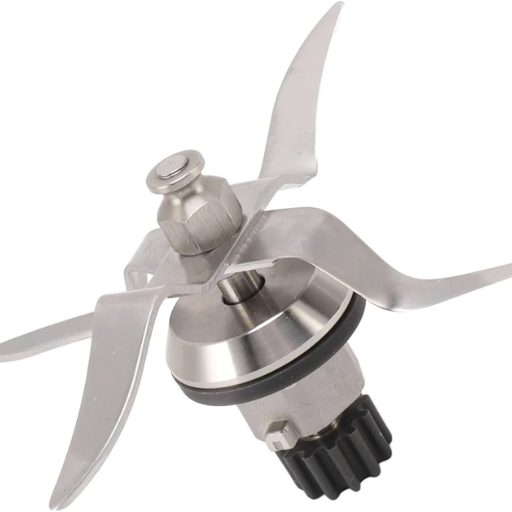
- Dull Blades
With frequent use over time, blender blades may get dull which results in reduced productivity and blending, working less efficiently and not blending evenly. Regular inspection and proper maintenance can help address such problems upwash.
- Leaking Seals
Silicon or rubber gaskets which surround the blades also succumb to decay and wear as gaskets which assist in operating the device efficiently. With the right silicone parts, gaskets can easily be substituted to resolve any issues with leaky fluids.
- Blade Jamming
After the device is used, it is important clean it. Food debris or hard items such as seeds may cause jamming of blades which is inconvenient for most users. This issue can easily be resolved by cleaning the device thoroughly after each use. Overloading the device is also not recommended.
- Rusting Blades
Not ensuring proper drying of the blades may initiate rusting and impede fresh usage. Braun blades which are made from stainless steel will require immediate drying post usage in order eliminate rust risk and preserve freshness.
- Unusual Noises or Vibrations
Loose components and blades may lead to excessive noise and rusting while being in use. Rough tightening of the blade holder will improve the performance of the device if all damaged parts are replaced during maintenance.
Why Is My Blender Blade Not Turning?
Mechanical or electrical problems relating to the motor will typically stop a blender blade from spinning. One of the more common issues is the build up of food or debris between the blender jar and the blade assembly which causes some sort of blender resistance. Performing clean upkeep on the parts such as the blender jar will avoid clogging and ensure proper operational functionality. Bearings in the blade assembly that have gotten too old or damaged are an added frequent concern; they can also stop movement and must be changed in order to restore adequate function.
Overheating and being overworked will result in the motor going round in circles without giving the blades some rotational spins, effectively stopping the blades from spinning. Should the motor burn or fail to operate with a baseline load, burning scent emanating from it, then the unit requires servicing or replacement. Drive coupling destruction resulting from poor seating and excess driving force will separate the blade from motor power as well. Adhering to the care instructions mitigates these potential problems. To preserve the longevity of the blender, carefully diagnosing and systematically addressing the underlying issues will effectively resolve blender problems.
Signs That Your Blender Blade Needs Replacement
- Reduced Blending Performance
If a blender is having difficulty blending ingredients that it previously did with ease, like soft fruits or ice, it is most likely a sign of a dull or damaged blade. Increased blending times as well as uneven mixtures are a result of less effective blades; this is because over time the edges of the blades wear down.
- Visible Damage or Deformation
Visually checking a blade’s assembly for missing, bent, or cracked parts should be routine. Blades that are deformed can greatly impact the time taken to blend ingredients as well as posing a danger while blending due to potentially breaking mid-blend.
- Unusual Noises
A blender operating while making grinding, squeaking, or rattling sounds is also a sign a blade assembly isn’t working correctly and more often than not will point towards some kind of misalignment. Blades systems under stress due to damage can also be a reason to noise like this.
- Leaks Around the Blade Assembly
Liquid seeping from the bottom of the jar while in use is commonly interpreted as a sign of looseness. This is not the case, and is most likely a result caused by a worn-down blade assembly that fails to complete the seal properly, the shuttle assembly.
- Rust or Corrosion
If metal blades are exposed to moisture or not dried properly after washing, they can develop rusty patches or even corrosion. They don’t just affect the performance of the blade, but the rust particles can also claim use of food, which is a big hygiene point of concern.
If these signs are tended to immediately, the performance of the blender can be polished and the longevity of the appliance can also be increased, preventing more damage to the internal parts of the blender.
Maintenance Tips for Your Blender Blade
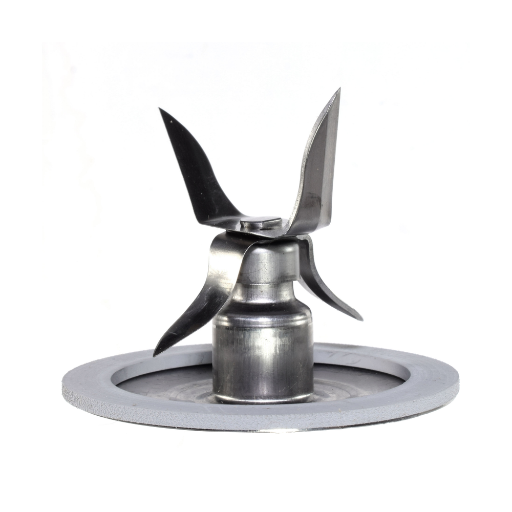
- Clean After Every Use
To keep the blade components from hardening and building up, rinse them with warm, soapy water after every use. Do not soak the blade assembly if it is non detachable.
- Inspect Regularly
Check the blade for signs of dullness, rust, or damage. If you notice any issues, replace the blade promptly to maintain efficiency and safety.
- Avoid Abrasives
Use a soft sponge or cloth when cleaning the blade to prevent scratching or dulling its surface. Harsh scrubbing materials can accelerate wear.
- Dry Completely
Prevent moist residue which can rust or corrode over time by cleaing the blade thoroughly and ensuring it is bone dry afterwards.
- Use as Intended
Do not mis use the blender for other tasks than it was designed for. Not preparing hard or frozen items beforehand, will put tremendous strain on the blades, risking damage.
How to Clean Your Blender Blade Properly
Blender blade and bender snippets undergo a lot of stress during their life which makes proper maintenance essential. In this sentence, we shall explore the methods to clean and maintain a blender blade.
1. Detach the Blade Assembly
If the blender model permits, start off by separate the blade assembly from the jar. This gives freedom of movement without amplifying risk of damage during cleaning.
2. Pre-Rinse Immediately After Use
As for cleaning, it deeply starts to scrub and apply dish soap alongside warm water. Directly apply warm waters and free flowing dishes and skip cleansing steps to allow food residue to gunk up.
3. Use Gentle Cleaning Solutions
Combine small amount of mild water with warm heated one to form the washing solution. Steam and washing is prohibited with any blade due to significant damage it will tend to cause over time.
4. Handle the Blade with Safety Precautions
Avoid contacting if ends of blade while polishing while keeping the frame straight is necessary so please first take care of this very important note. Do not place the blade in water for prolong periods because it can result into severe damage.
5. Inspect for Residual Debris
Inspect the blade for trapped food particles in the small notches. A soft-bristled toothbrush will assist in removing stubborn buildups in gaps that are difficult to reach.
By following these tips, you are ensuring that the efficiency and life span of your blender blade are both maximized. Frequent cleaning safeguards the safety and effective functioning when preparing food.
Preventing Rust and Damage to Your Blender Blade
To limit the risk of mechanical erosion and rust, greater emphasis on upkeep and maintenance is critical. For these reasons, care and maintenance is fundamental. Remember to always dry the blade right after washing it to prevent water accumulation, as corrosion is one of the primary causes. For added assurance, periodically applying a thin layer of mineral oil on the blade surface fights oxidation; therefore, protecting the blade. Furthermore, do not attempt to blend hards items without sufficient liquid to aid in the blending as this puts undue stress on the blade from warping or dulling over time. Using high-grade, stainless-steel blades that are manufactured to resist rust will further improve durability. Following these tips yields optimal performance while ensuring good condition of the appliance.
Where to Buy Blender Blade Accessories?
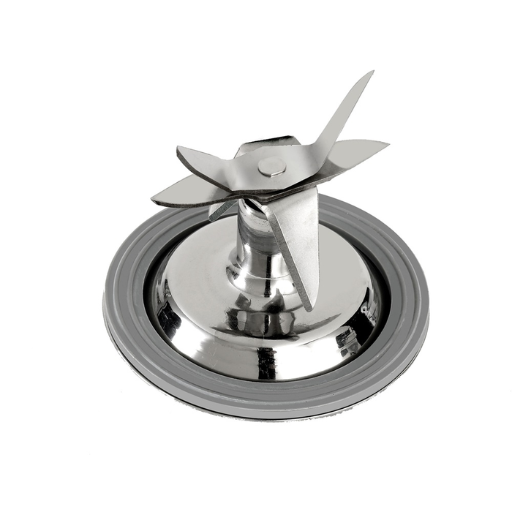
Blender blade accessories can be obtained from a few trusted sources which are mentioned below:
1. Manufacturers: The manufacturer’s website is always a good place to check for replacement parts as they usually stock these and other parts as per the model.
2. Other Retail Stores: Many other retail stores do stock relevant parts like bigger appliance retailer stores, other local stores, or online stores.
3. E-commerce Sites: These have a lot of options from famous brands like Amazon and Walmart. Double-check with the reviews to see if it was recommended and if it fits the blender.
4. In-House Repair Shops: Specific blades for appliances can be available at some repair shops. They can also buy them from the manufacturer for you.
For any other places you purchase from, always double check that it fits your appliance. This guarantees safety for use with your appliance.
Online Retailers for Blender Replacement Parts
While looking for parts to repair your blender, some of the well-known online sellers offer good options, including Amazon. Amazon continues to be the foremost seller of parts, and their reviews facilitate sorting out problem-free, compatible parts. Most of the sellers provide adequate product description and cross reference charts, which guarantee compatibility with your appliance. Correspondingly, Walmart also stocks various replacement parts, like blades, gaskets, and jars, which can also be picked up in store.
If you’re looking for exotic parts, eBay is another commendable route. Sellers from every corner of the globe sell both new and refurbished parts. Like Ninja and Vitamix, some accredited blender makers sell replicas through their stores on the retailer websites to maintain authenticity. For safety and efficiency, retailer that sell OEM, Original Equipment Manufacturer, parts should be prioritized. They are more reliable and compatible with the specific unit model.
Physical Stores That Stock Blender Accessories
While looking for a blender addon in a local shop, kitchen specialty stores as well as appliance repair shops can be good options. Depending on their partnerships with brands, Bed Bath & Beyond, Target, and Walmart do stock blender parts. If you are looking for branded accessories, Williams Sonoma and Sur La Table stock top quality replacement jars, blades, and gaskets for premium brand blenders. Local appliance repair shops are another valuable resource as they stock compatible spare parts for various models. This local sourcing not only ensures the customer’s easy access to replacement parts, but also provides a chance to inspect the items before purchasing them.
Reference Sources
-
Modifying Blender Blades for Seed Cleaning – Discusses techniques like using modified blender blades for seed cleaning and scarification.
-
Design and Construction of an Industrial Blender – Focuses on the design and construction of a blending system, particularly for ice cream.
-
Investigation of Granular Dynamics in a Continuous Blender – Explores the effect of impeller speed on blending performance factors like residence time and hold-up mass.
Frequently Asked Questions (FAQs)
Q: What are the key accessories for a Ninja Blender?
A: Key accessories for a Ninja Blender include the Ninja Blender blade, jar base, cap, and gasket replacement parts. These components ensure optimal performance and durability of your blender.
Q: How do I know if a blender blade replacement is compatible with my Oster blender?
A: To determine compatibility, check if the blade replacement part is specifically labeled as compatible with Oster models. Look for details like the model number and ensure it matches your Oster blender specifications.
Q: What is the purpose of the gasket in the blender assembly?
A: The gasket serves as a seal between the jar and the base of the blender, preventing leaks during operation. A damaged gasket can lead to leaks, so it’s important to replace it regularly.
Q: Can I use a Ninja blender blade with an Oster blender?
A: No, Ninja blender blades are not compatible with Oster blenders. Each brand has unique designs and specifications for their blender blade replacements.
Q: What should I look for when purchasing a jar base for my blender?
A: When purchasing a jar base, ensure it is specifically designed for your blender model. Look for details like the model number, such as the jar base cap 4902 or 4961, to ensure a proper fit.
Q: Is there a blender blade replacement that works with both Nutri Ninja and Magic Bullet?
A: No, Nutri Ninja and Magic Bullet blenders have different specifications. Always check for replacement parts that are specifically labeled as compatible with either Nutri Ninja or Magic Bullet.
Q: How do I replace the ice blade with jar base in my Ninja Blender?
A: To replace the ice blade with jar base, first ensure the blender is unplugged. Remove the jar from the base, take off the old blade by unscrewing it, and install the new ice blade. Secure it tightly and reattach the jar to the base.
Q: What is the role of the lid in the blender assembly?
A: The lid is crucial for preventing spillage during blending. It secures the contents inside the jar and helps maintain pressure, allowing for effective blending.

